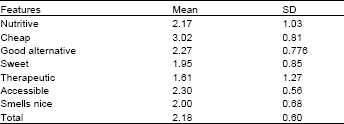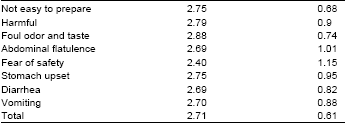Research Article
Use of Soy Bean Products as Cheap Sources of Protein in Child-Nutrition in Akpuoga Nike Community, in Enugu State South East, Nigeria
Department of Nursing Sciences, Faculty of Health Sciences and Technology, University of Nigeria, Enugu Campus, Nigeria
Ijeoma O. Ehiemere
Department of Nursing Sciences, Faculty of Health Sciences and Technology, University of Nigeria, Enugu Campus, Nigeria






















